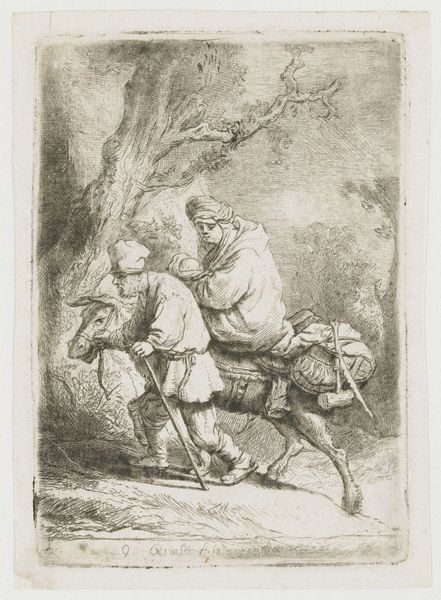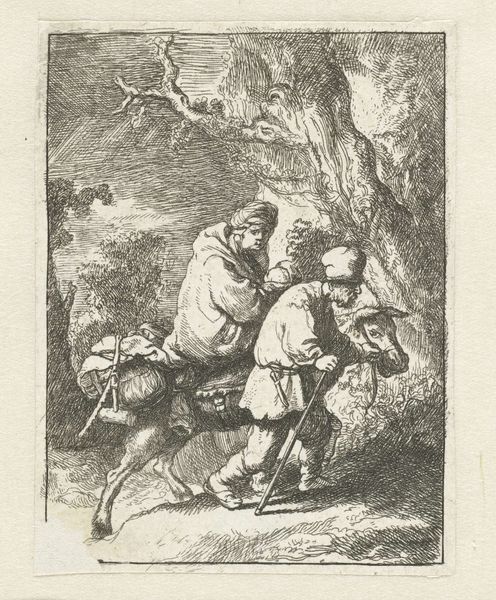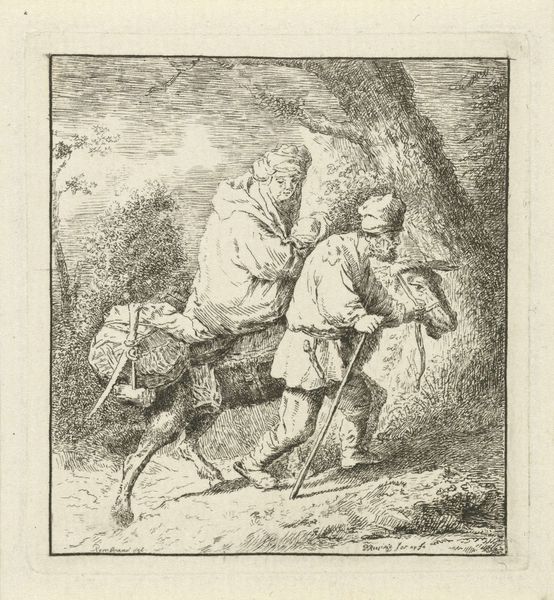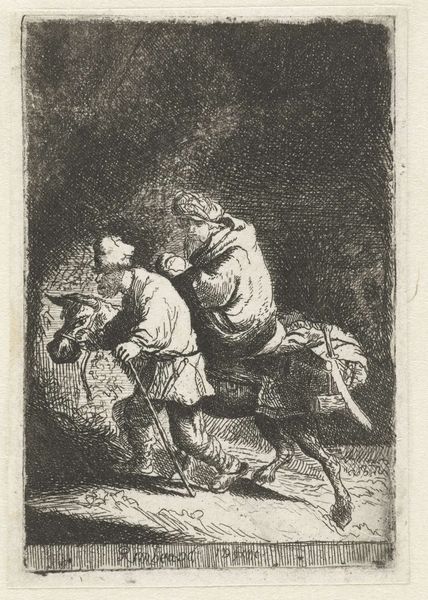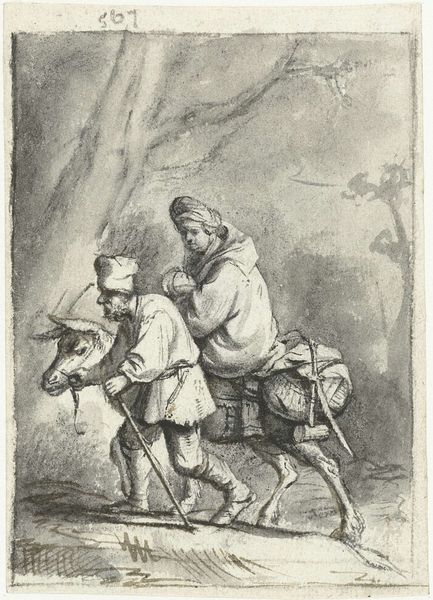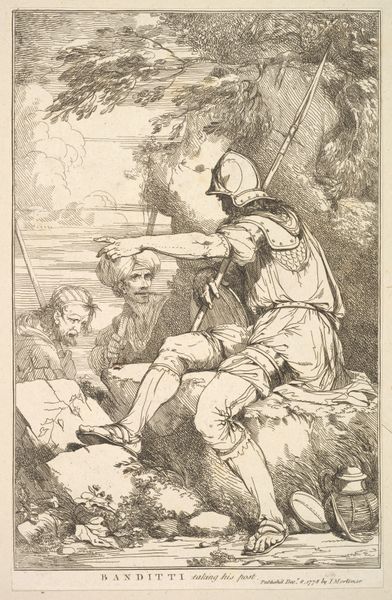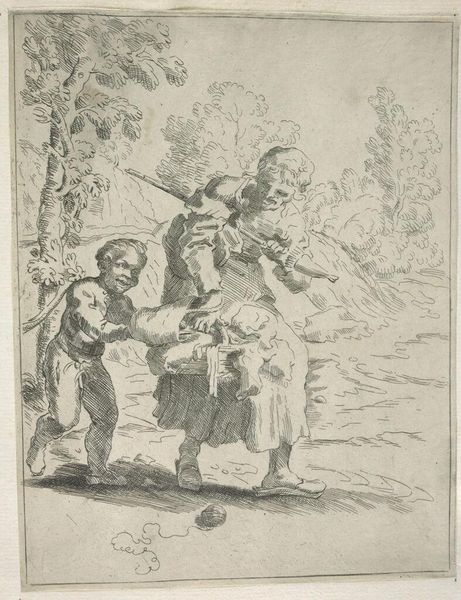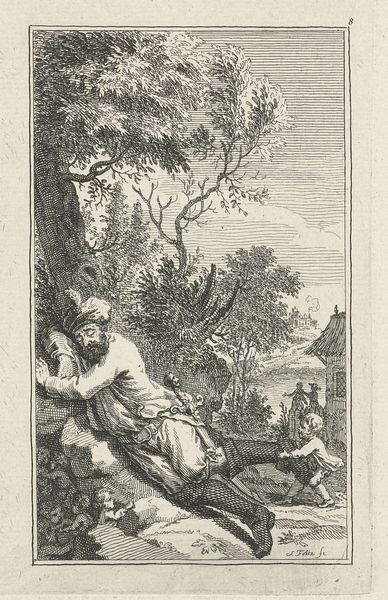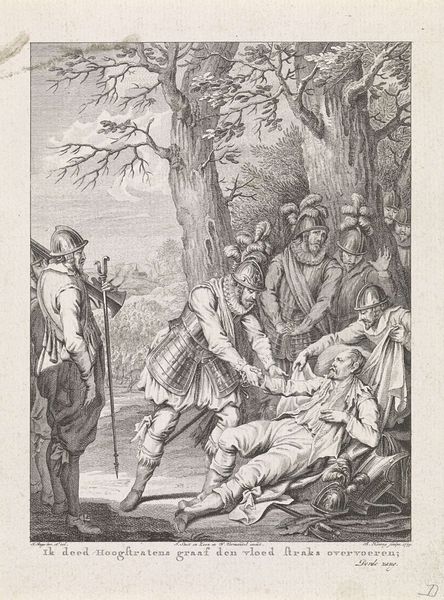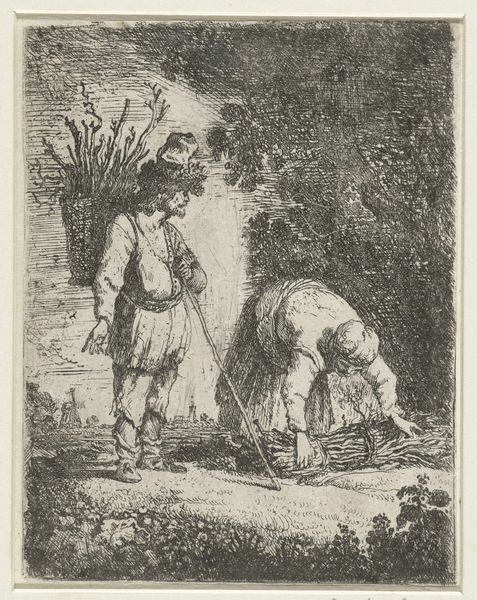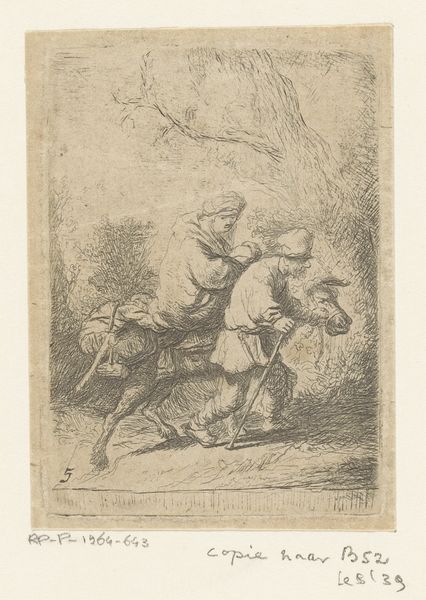
drawing, etching
#
drawing
#
narrative-art
#
baroque
#
etching
#
landscape
#
figuration
#
history-painting
Copyright: Public Domain: Artvee
Editor: Here we have Rembrandt van Rijn’s etching, "The Flight into Egypt," created in 1633. It's quite small, isn't it? I'm struck by how he captures this biblical scene with such mundane materials. How do you interpret this work? Curator: I see a concentrated focus on the very labor and materials of printmaking. The deep blacks achieved through the etching process aren't just for dramatic effect; they represent the toil and craft involved in producing this image. Note, too, how the landscape is built with many distinct bites of the etching tool: How does this labor connect with the figures depicted? Editor: It does feel very process-oriented. The lines are so deliberately etched; each mark tells of the physical effort of the artist. It’s far removed from the smooth polish you see in some Baroque painting. Curator: Precisely. It’s worth noting, too, that the relatively wide distribution of these prints made art ownership more accessible than, say, commissioning a large history painting. Consider this alongside the clothing of the holy family. They don't appear divine or especially elevated, emphasizing a very material, and accessible interpretation. Where would an art critic of the time think this piece would fit into a hierarchy? Editor: Interesting. They would maybe be torn; elevating it for skill and innovation but pushing it down for its unidealized figures. Do you think this affected his commissions later on? Curator: It’s plausible. We might also consider how such pieces facilitated a personal engagement with religious narratives. Etchings such as this weren’t crafted only for aristocratic eyes; there's also a burgeoning market and distribution of artworks that appeal to merchants and middle classes. What implications do you see for labor practices of the time? Editor: So, it's a material object that both represents a journey and enables a kind of journey for the viewer, regardless of social class, offering wider access to religious imagery... Thanks! Curator: Indeed, a fascinating case of material, meaning, and access intertwined!
Comments
rijksmuseum about 2 years ago
⋮
The Flight into Egypt must have had a special significance for Rembrandt, for he revisited the subject repeatedly. This version of 1633 is much more skilfully etched than the previous one. However, he did struggle with the porous etching ground, which renders the sky an uneven grey. This is not too disturbing: with a little imagination, it looks just like a starry sky.
Join the conversation
Join millions of artists and users on Artera today and experience the ultimate creative platform.
